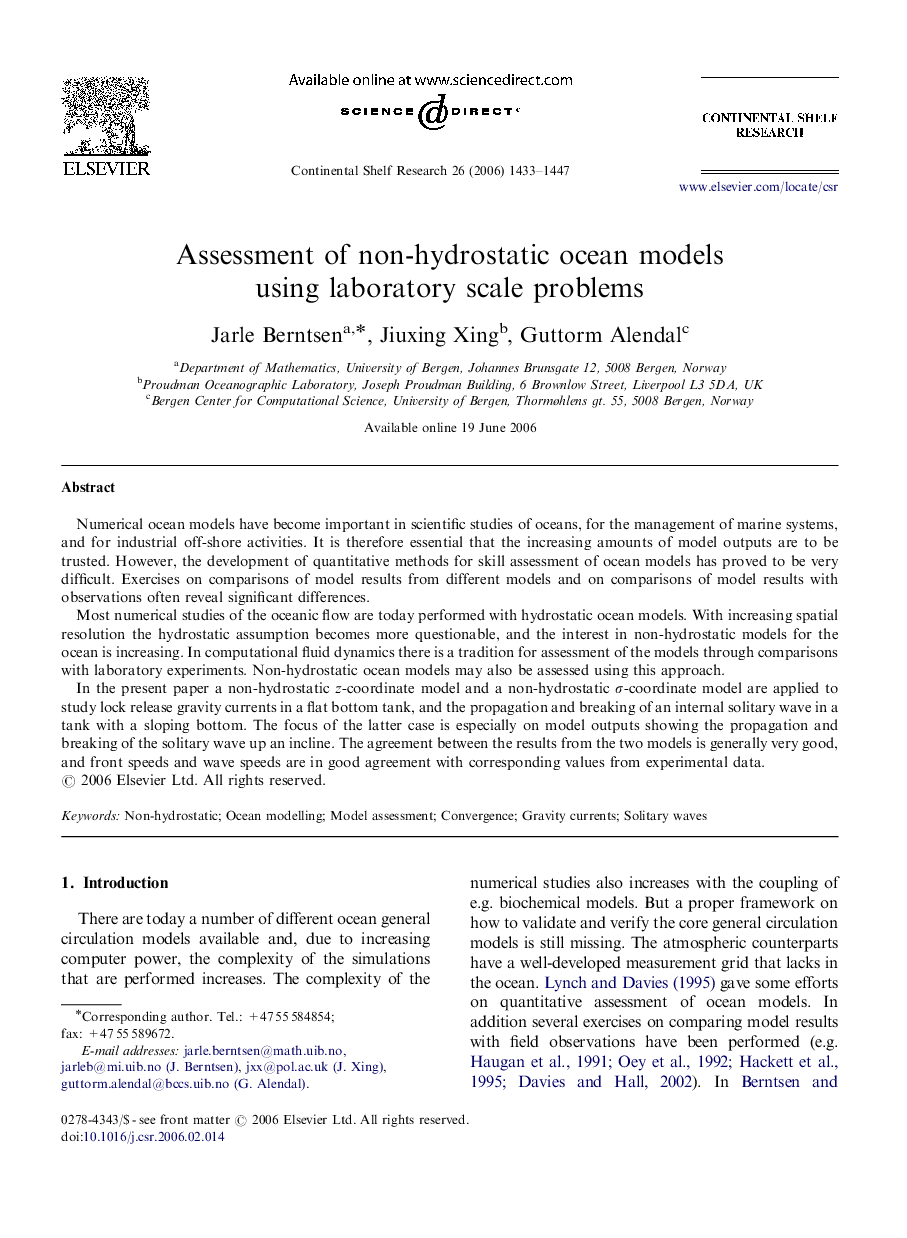| Article ID | Journal | Published Year | Pages | File Type |
|---|---|---|---|---|
| 4534033 | Continental Shelf Research | 2006 | 15 Pages |
Numerical ocean models have become important in scientific studies of oceans, for the management of marine systems, and for industrial off-shore activities. It is therefore essential that the increasing amounts of model outputs are to be trusted. However, the development of quantitative methods for skill assessment of ocean models has proved to be very difficult. Exercises on comparisons of model results from different models and on comparisons of model results with observations often reveal significant differences.Most numerical studies of the oceanic flow are today performed with hydrostatic ocean models. With increasing spatial resolution the hydrostatic assumption becomes more questionable, and the interest in non-hydrostatic models for the ocean is increasing. In computational fluid dynamics there is a tradition for assessment of the models through comparisons with laboratory experiments. Non-hydrostatic ocean models may also be assessed using this approach.In the present paper a non-hydrostatic z -coordinate model and a non-hydrostatic σσ-coordinate model are applied to study lock release gravity currents in a flat bottom tank, and the propagation and breaking of an internal solitary wave in a tank with a sloping bottom. The focus of the latter case is especially on model outputs showing the propagation and breaking of the solitary wave up an incline. The agreement between the results from the two models is generally very good, and front speeds and wave speeds are in good agreement with corresponding values from experimental data.
